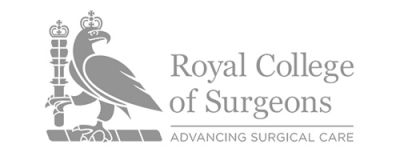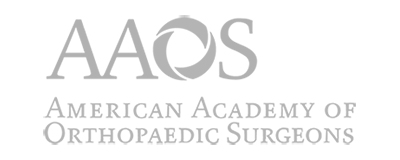ACL RECONSTRUCTION
This summary is to improve knowledge and understanding of the rehabilitation involved after anterior cruciate ligament reconstruction. It includes basic anatomy and information about the operation itself.
BACKGROUND ANATOMY
The knee is a complicated joint between the femur (thighbone) and the tibia (shinbone). The anterior cruciate ligament (ACL) runs from the back of the femur to the front of the tibia. It is one of the main restraining ligaments in the knee and acts to prevent excessive forward movement of the tibia. Its main function is to give the knee stability during rotational movements like twisting, turning and sidestepping.
The ACL is most likely to be injured in a non-contact twisting movement. A tearing or popping sensation is frequently reported at the time of injury and immediate swelling is common due to bleeding from the ruptured ligament. Injuries to the joint surfaces (articular cartilage) or menisci (footballer’s cartilage) can also occur at the same time.
The ACL also provides important information about balance to the joint and surrounding muscles. When it has been torn, it is unable to heal and the balance information it carries is also lost. Sometimes, these balance mechanisms can be improved with specific exercises and stop the knee giving way. However, when the exercises are not enough, then reconstruction of the ACL may become necessary. It must be said that reconstructed ligaments can never totally replace the function of the original ligament.
THE OPERATION
The surgery is designed to allow individuals to return to their normal function and sporting activities. It should stabilise the knee and stop the knee buckling or giving way. However, the results can be unpredictable.
Published reports indicate 85 – 90% of people consider their knee to be functioning normally or near normal after surgery.
The reconstructed ligament is not the same as the original but appears to give satisfactory results. Wear and tear arthritis is associated with ligament injuries and is not necessarily prevented by ligament reconstruction surgery.
OUT-PATIENT EXERCISE PROGRAMME
After attending individual physiotherapy sessions, you may be transferred to an ACL class in the gym. This is usually somewhere between 2-6 weeks post-operatively depending on your progress. The classes will be hard work. To enable you to monitor your progress, you should keep a record of repetitions and weights and always aim to beat your previous scores (unless advised otherwise).
The classes are based on a timed circuit and exercises are progressed, as they become easier to perform. Most of the exercises can be modified so they can be performed at home. You will attend the gym once a week, but it is important you continue with daily rehabilitation exercises. It can be useful to put ice on your knee for 10-15 minutes at the end of exercise sessions.
The above is based on having had a routine ACL reconstruction. Modification of these guidelines may be necessary if your surgery is more complex and this will be done via your Physiotherapist under the instruction of Mr Aslam.
Exercises are to be performed daily. They are split into different stages depending on the time from your operation. All exercises should be pain free when performed. If you have any problems with them please consult the Physiotherapist who is looking after you.
Discussion with Mr Aslam is important to answer any questions that you may have. For information about any additional conditions not featured within the site, please contact us for more information.








